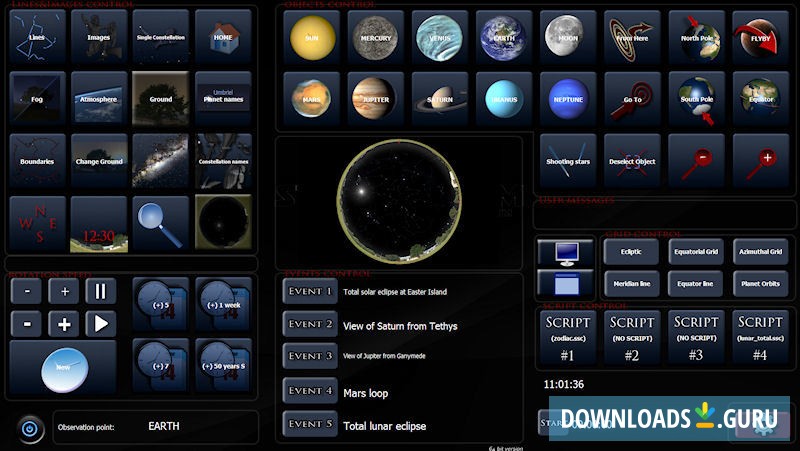

The search function returns results speedily and automatically navigates to the searched object instantly.Īs already mentioned, Stellarium has branched out in recent years and has options to download the desktop program for Windows, Mac and Linux operating systems, but also has a web-based version that allows anyone to access Stellarium at a moment’s notice.
#Stellarium program software#
We’ve been using this software for years and have never had it crash or slow up once.
#Stellarium program install#
PerformanceĪ minuscule install and robust controls make the performance of Stellarium stable on any device. But there is a small glitch on the desktop software where if an object is selected the information is displayed on the left-hand side of the window, which obscures the upper-most buttons on that side’s control panel. The real genius of the display comes in the time control options, which allow intuitive fast forward, rewind, play or pause controls and visually zoom the sky forward and back while in use. Plus, it adds equatorial and azimuthal grid overlays, places the ground in for realistic horizons, and users can toggle deep-sky objects, meteor showers and exoplanet views. However, two main control panels in the bottom left of the screen make for quick toggling on and off of viewing options such as providing constellation lines, art, and boundaries. Clicking on an object will bring up its vital statistics, from which we would like to see more detail in the form of a link like competitor software offers, so this is one area in which Stellarium shows the limits of its open-source scope. Click and drag on the main screen to navigate 360 degrees throughout the night sky and scroll or pinch to zoom in and out of the view for more or less detail as desired. Stellarium’s interface is outstandingly intuitive. (Image credit: Jason Parnell-Brookes) (opens in new tab) Each constellation has translated language, a native language, and an abbreviated language. Sure, Stellarium lists out all the constellations in the night sky, but it’s inclusive as well, by also displaying constellations from over 40 different cultures worldwide. This view provides a helpful list of cameras with differently sized image sensors, telescopes, and Barlow lens options to overlay a helpful frame guide showing exactly what you’ll be capturing when shooting. For the average stargazer, ocular view provides more than enough information and scalability, but astrophotographers might consider the image sensor frame view. Namely, ocular view, image sensor frame, and Telrad sight. One option we particularly love is the ability to switch between different view modes. To view every deep-sky object on the software, you’d have to sift through the 80,000 different options available, which increases to over a million with the additional catalog. It contains a huge catalogue of over 600,000 stars added to by additional catalogs for more than 177 million.


It’s easy to see why Stellarium is much-loved among amateur astronomers and stargazers across the globe. Stellarium is available in web, desktop and mobile versions.


 0 kommentar(er)
0 kommentar(er)
